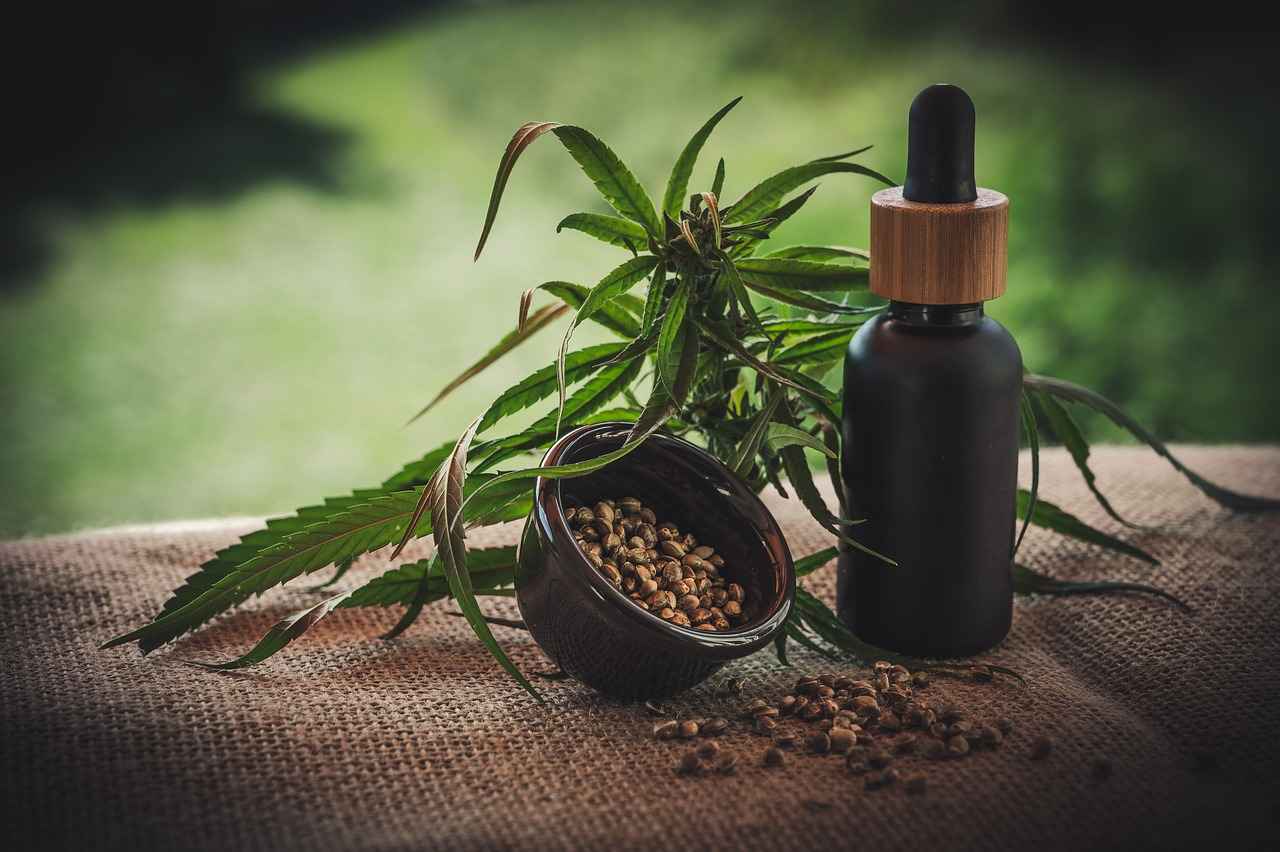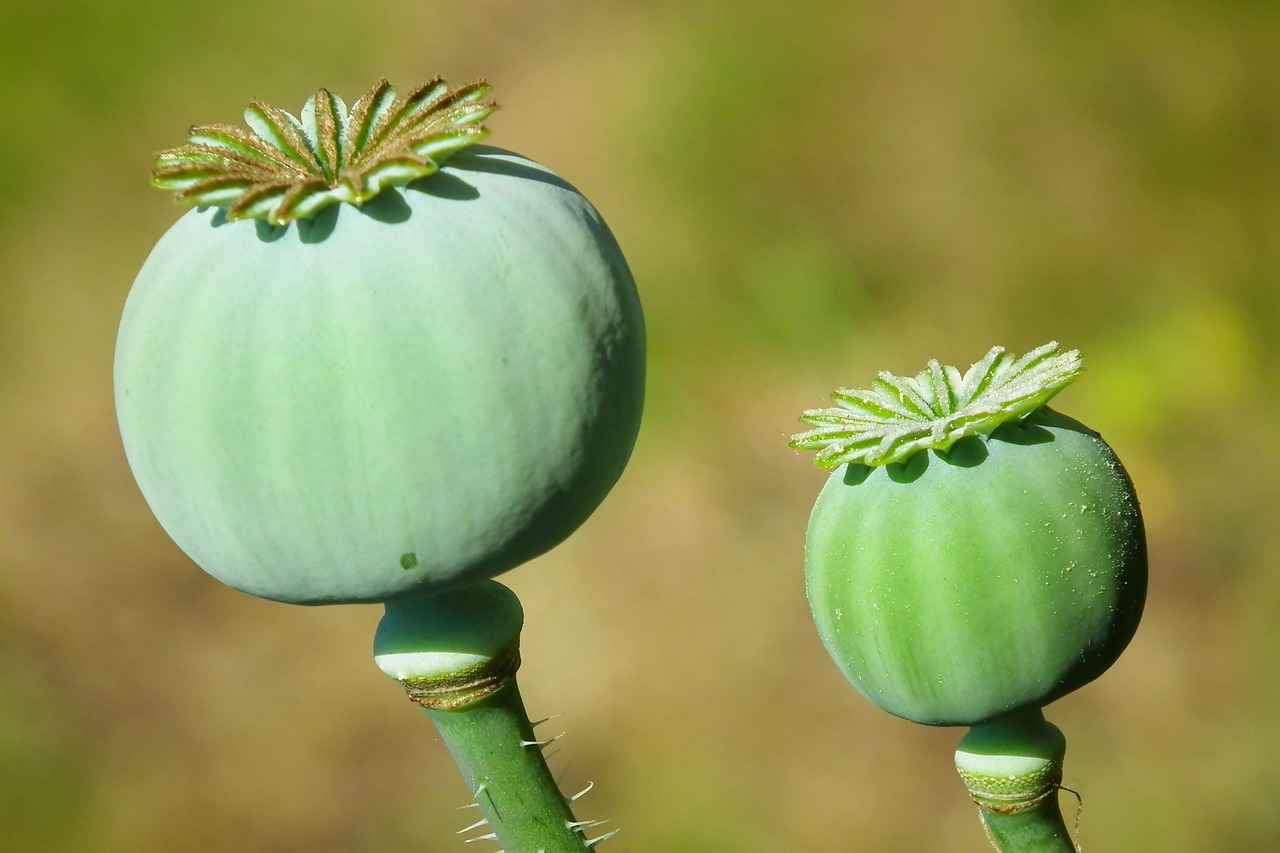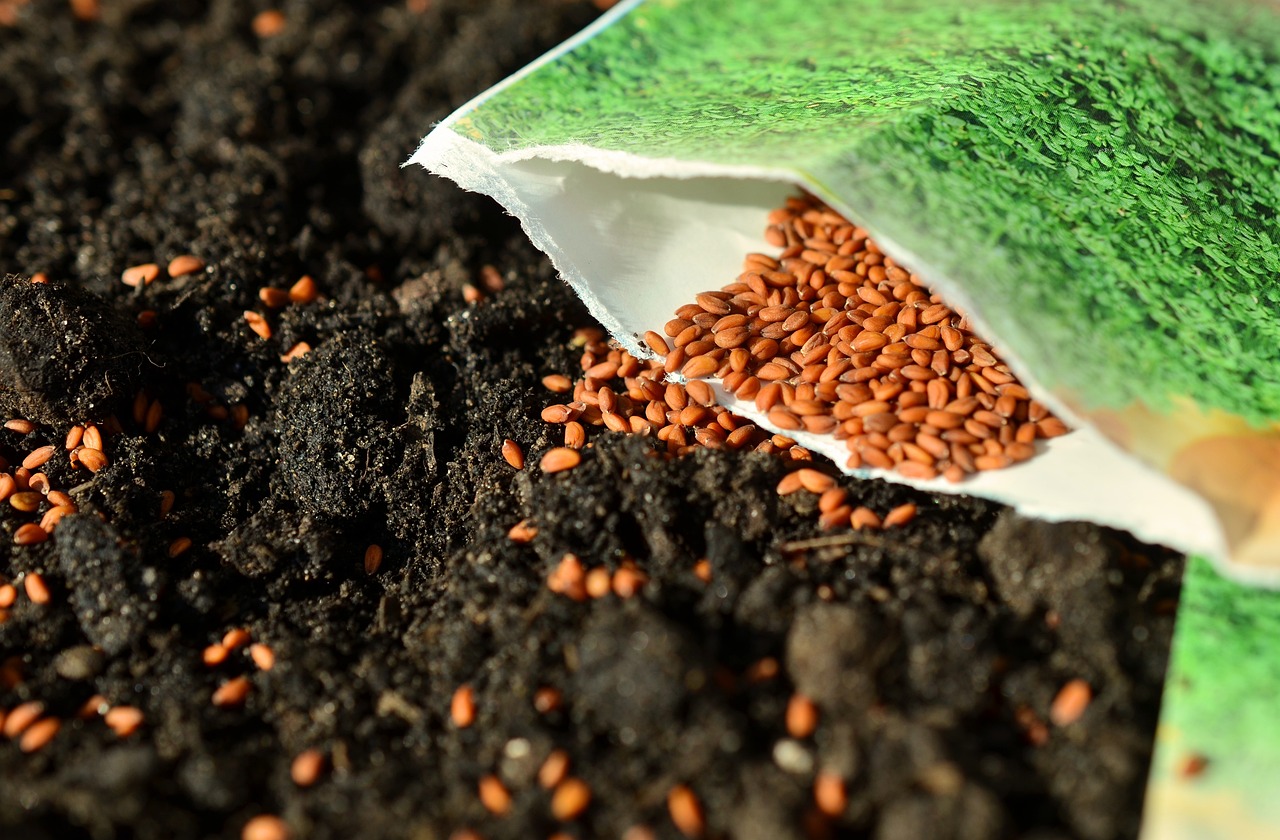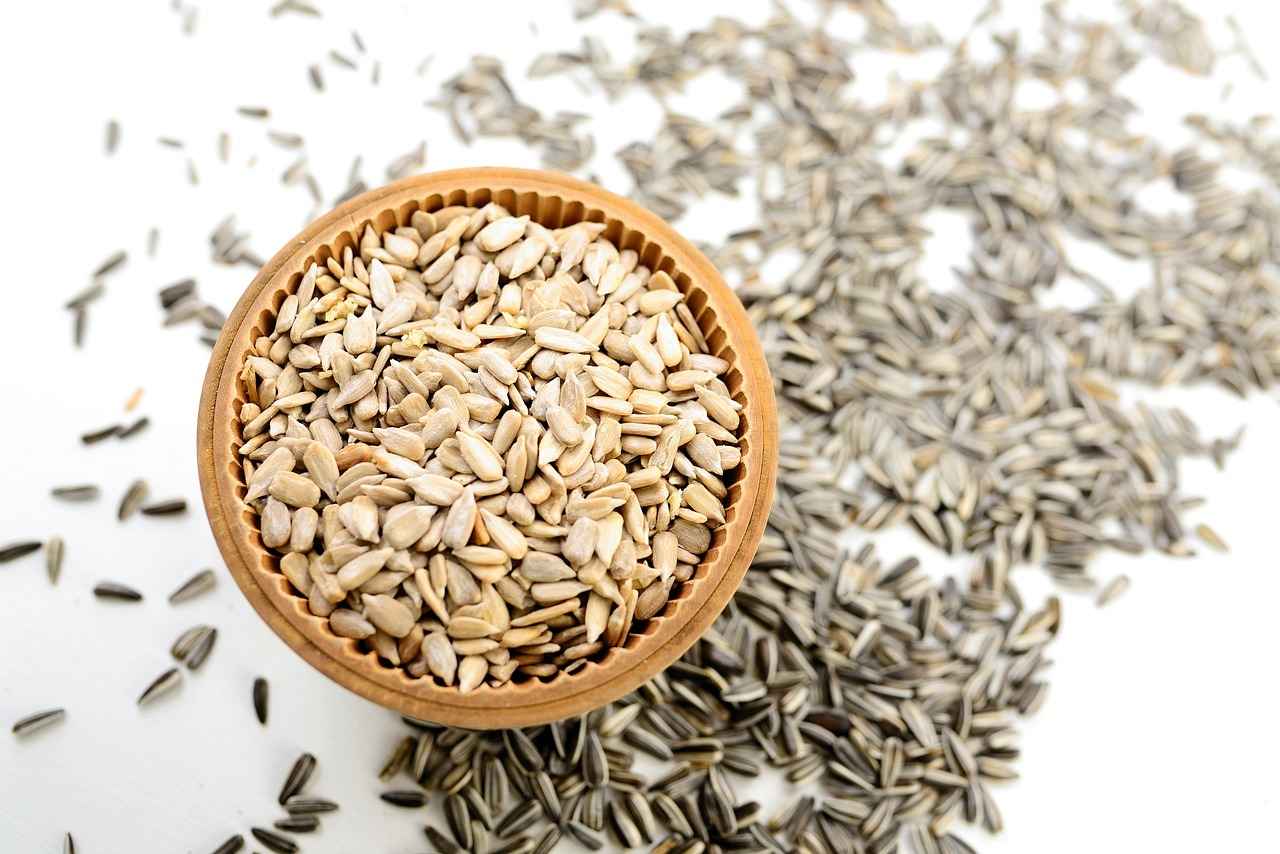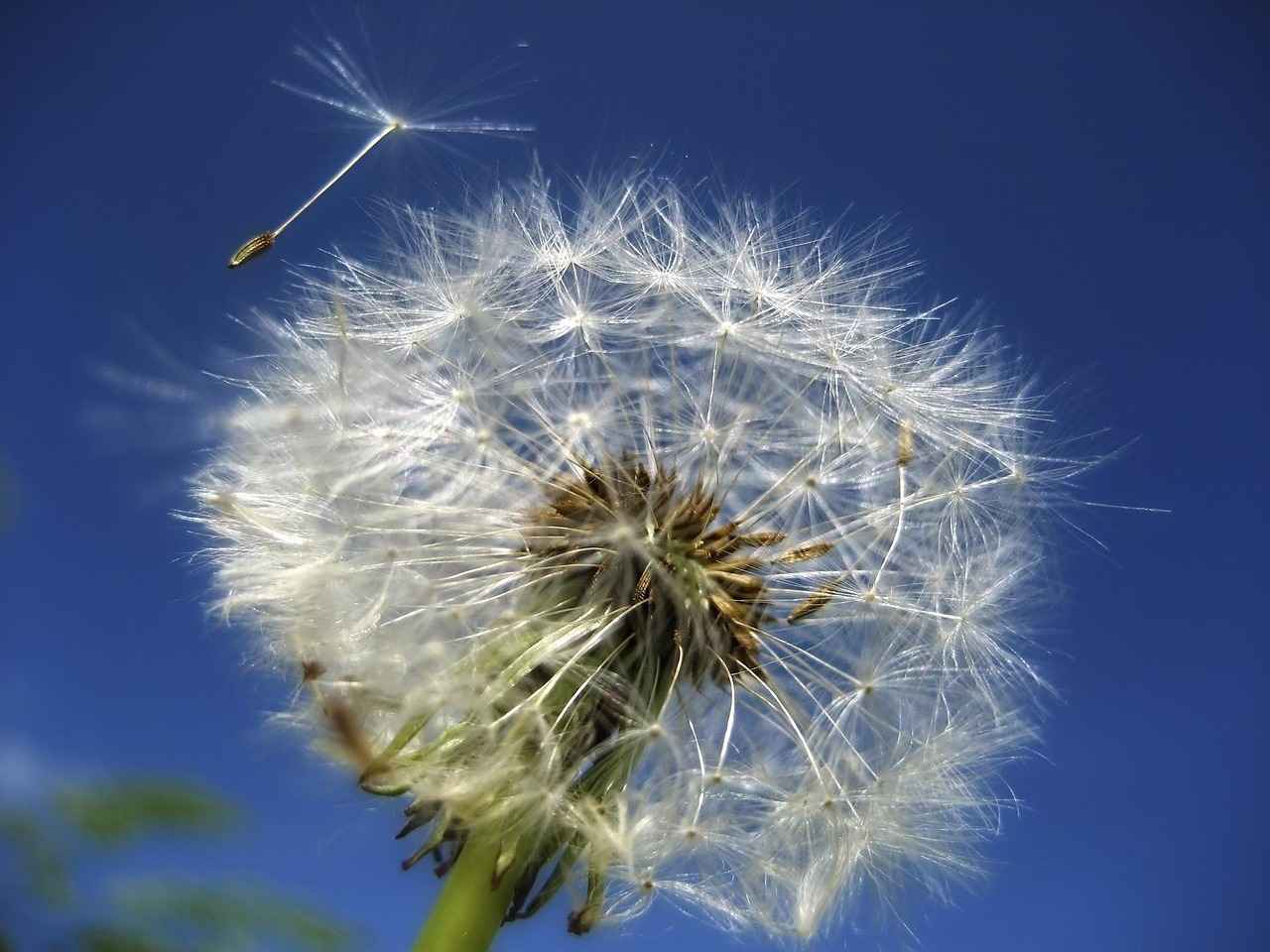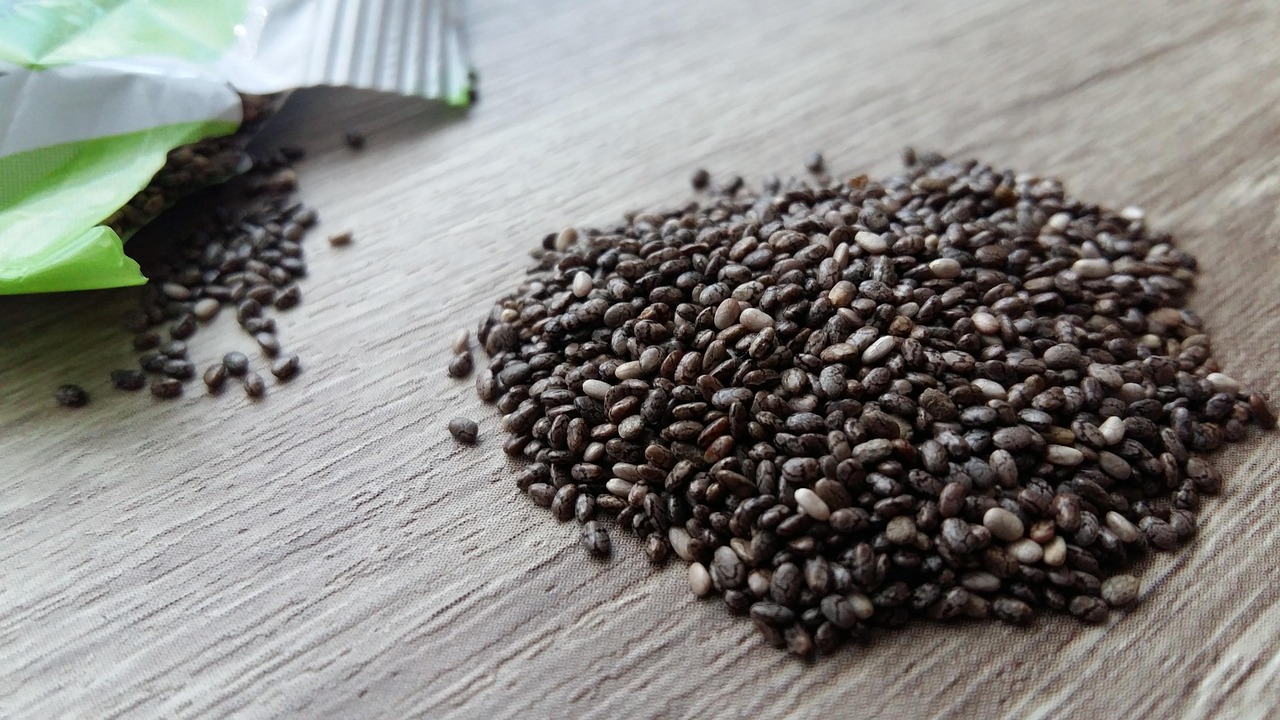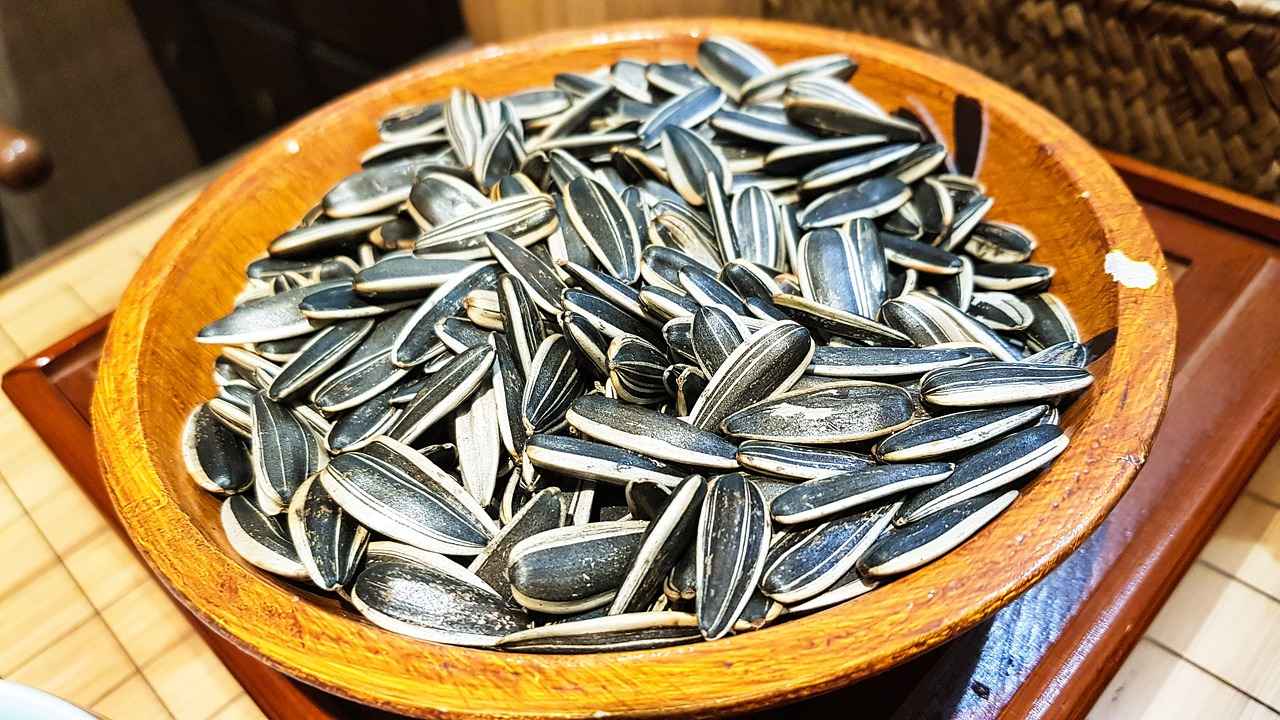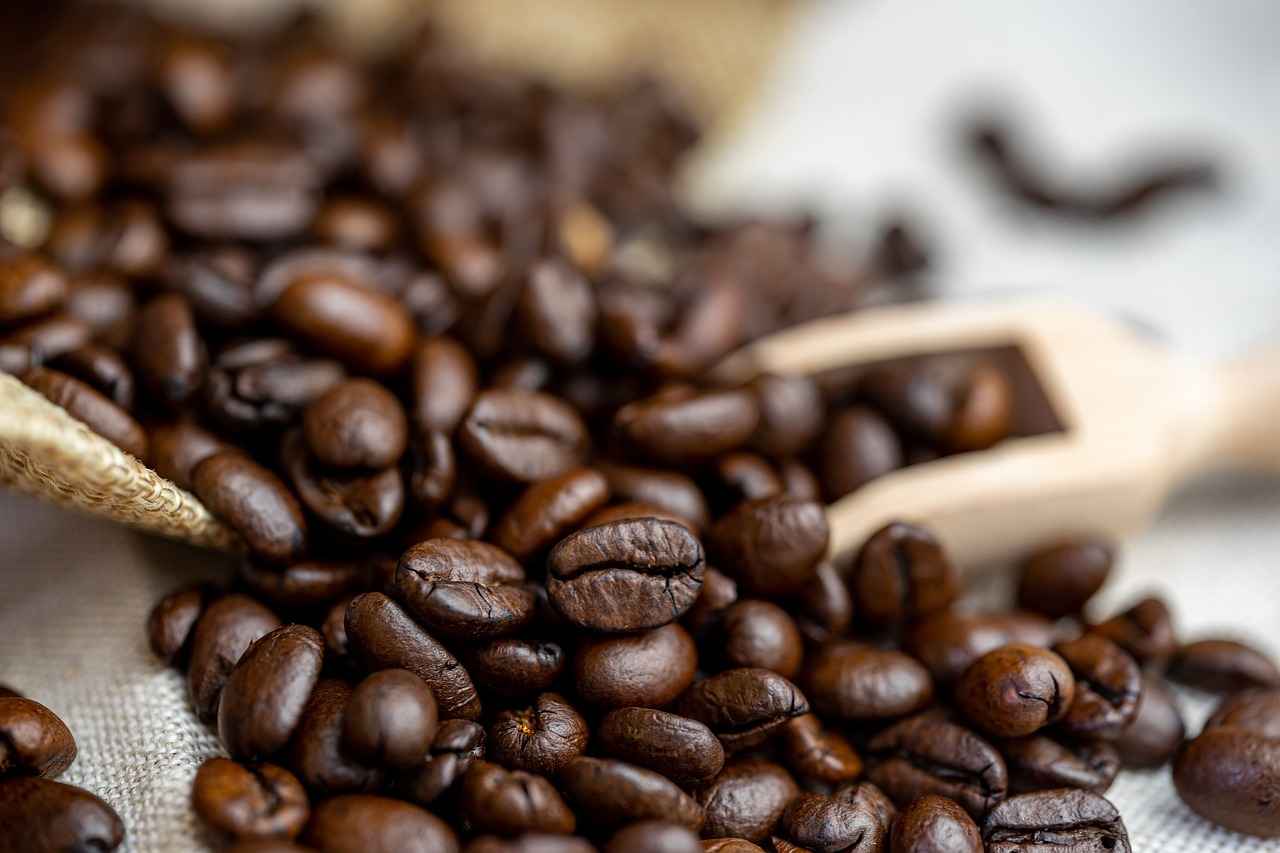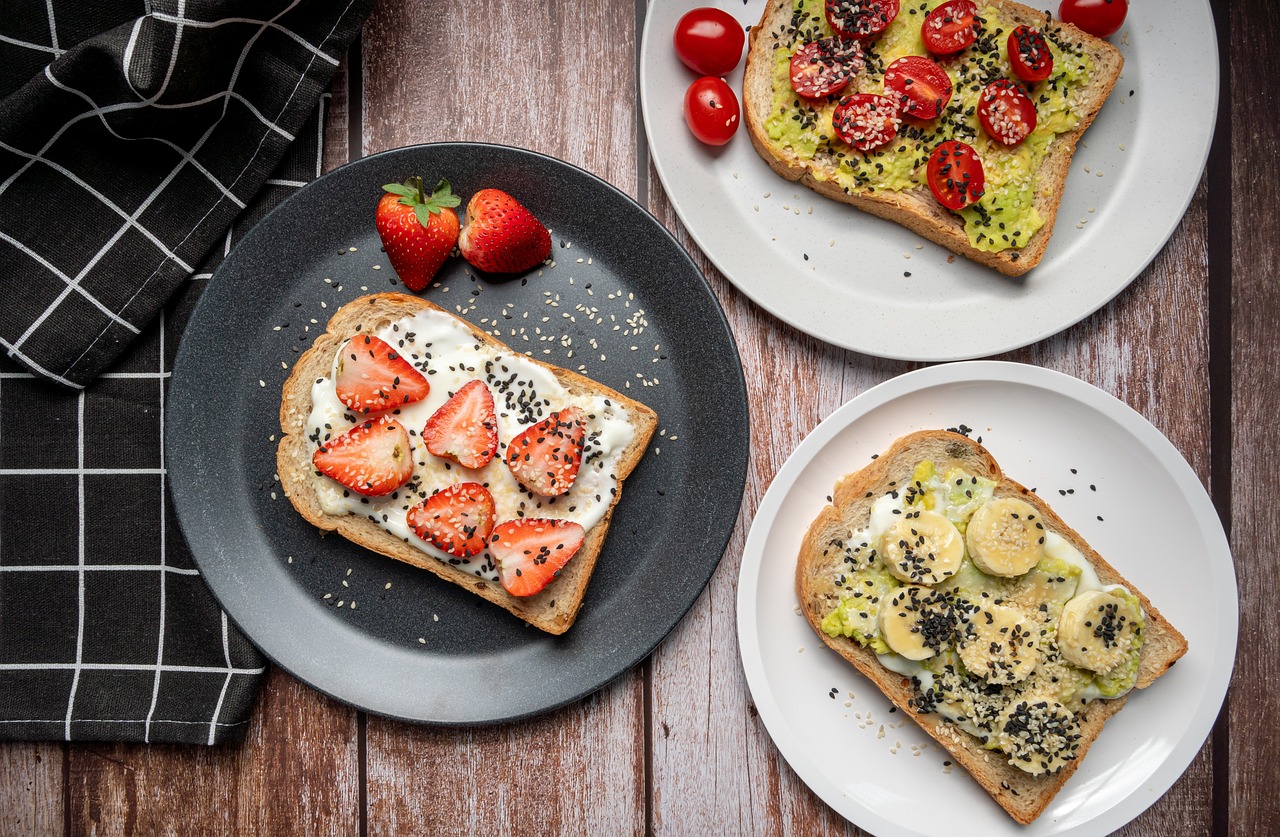Chia Seed Jam is quickly becoming a popular choice for those seeking a nutritious and flavorful alternative to traditional jams. Packed with health benefits, this delightful spread is not only easy to make but also offers a unique twist on your favorite breakfast and snack options. Let’s delve into the benefits and recipes for chia seed jam, and discover why it’s an excellent choice for health-conscious individuals.
Chia seeds are tiny, nutrient-dense seeds derived from the Salvia hispanica plant. These mighty seeds are rich in omega-3 fatty acids, fiber, and antioxidants. Incorporating chia seeds into your diet can:
- Support heart health by lowering cholesterol levels.
- Improve digestion due to their high fiber content.
- Boost energy levels, making them a perfect addition to your morning routine.
Creating your own chia seed jam is a straightforward process that requires minimal ingredients. Here’s how you can make it:
To prepare chia seed jam, you will need:
- Fresh fruit of your choice
- Chia seeds
- A natural sweetener like honey or maple syrup
- Lemon juice for flavor
Fruits such as strawberries, blueberries, and raspberries work exceptionally well in chia seed jam. Each fruit brings its own flavor and texture, allowing you to experiment and create unique combinations.
When selecting sweeteners, natural options like honey or agave syrup are preferable as they enhance the health benefits of your jam. Processed sugars can diminish the nutritional value.
1. Start by mashing the fresh fruit in a bowl.2. Add chia seeds, sweetener, and lemon juice to the mashed fruit.3. Stir well and let the mixture sit for about 15-20 minutes until it thickens.4. Transfer to a jar and refrigerate.
Homemade chia seed jam can last up to two weeks in the refrigerator. For longer storage, consider freezing it in airtight containers.
Be vigilant for signs of spoilage, such as an off smell, discoloration, or mold. If you notice any of these, it’s best to discard the jam.
Chia seed jam is incredibly versatile. Here are some creative ideas:
Enhance your breakfast by spreading chia seed jam on toast, mixing it into oatmeal, or adding it to yogurt for a nutritious start to your day.
This jam can also be used in desserts. Incorporate it into pastries, cakes, or even as a topping for ice cream to add a burst of flavor and nutrition.
Homemade chia seed jam often outshines store-bought varieties in both taste and health benefits. It is free from preservatives and artificial ingredients, making it a healthier choice.
Chia seed jam typically contains fewer calories and more nutrients than traditional jams. This makes it a better option for those monitoring their diet.
While store-bought jams may have a consistent taste, homemade chia seed jam allows for personalization and unique flavor combinations that can cater to your preferences.
Although chia seeds are generally safe, some individuals may experience digestive discomfort due to their high fiber content. It’s essential to start with small amounts and gradually increase your intake.
For those sensitive to fiber, ensure you drink plenty of water when consuming chia seeds to aid digestion.
While rare, some individuals may have allergies to chia seeds. Monitor any reactions when introducing this ingredient into your diet.

What Are Chia Seeds and Their Benefits?
Chia seeds are small, black or white seeds derived from the Salvia hispanica plant, native to Central America. These tiny seeds have gained immense popularity in recent years due to their remarkable health benefits and versatility in culinary applications. Packed with essential nutrients, chia seeds are a powerhouse of omega-3 fatty acids, fiber, and antioxidants, making them an excellent addition to a balanced diet.
Chia seeds are often hailed as a superfood due to their impressive nutritional profile. Here are some key benefits:
- Omega-3 Fatty Acids: Chia seeds are one of the richest plant sources of omega-3 fatty acids, which are vital for heart health and reducing inflammation in the body.
- High in Fiber: With approximately 10 grams of fiber per ounce, chia seeds can aid in digestion, promote feelings of fullness, and help regulate blood sugar levels.
- Antioxidants: These seeds contain a variety of antioxidants that combat oxidative stress and protect the body from chronic diseases.
- Protein Source: Chia seeds provide a complete source of protein, containing all nine essential amino acids, making them an excellent option for vegetarians and vegans.
Incorporating chia seeds into your daily diet is simple and can be done in numerous ways:
- Add them to smoothies for a nutrient boost.
- Mix them into oatmeal or yogurt for added texture and nutrition.
- Use them as an egg substitute in baking by mixing one tablespoon of chia seeds with three tablespoons of water.
- Sprinkle them on salads or incorporate them into homemade energy bars.
Research suggests that regular consumption of chia seeds can lead to various health benefits, including:
- Weight Management: The high fiber content in chia seeds helps keep you satiated, potentially reducing overall calorie intake.
- Heart Health: Omega-3 fatty acids can lower cholesterol levels and reduce the risk of heart disease.
- Bone Health: Chia seeds are rich in calcium, phosphorus, and magnesium, all of which are essential for maintaining healthy bones.
While chia seeds are generally safe for most people, there are a few considerations to keep in mind:
- Digestive Issues: Due to their high fiber content, consuming too many chia seeds at once can lead to digestive discomfort. It’s best to start with small amounts and gradually increase your intake.
- Allergic Reactions: Some individuals may experience allergic reactions to chia seeds. If you have a history of seed allergies, consult your healthcare provider before adding them to your diet.
In summary, chia seeds are a versatile and nutrient-rich food that can enhance overall health and well-being. Their numerous benefits, combined with their ease of incorporation into various dishes, make them a valuable addition to any diet.
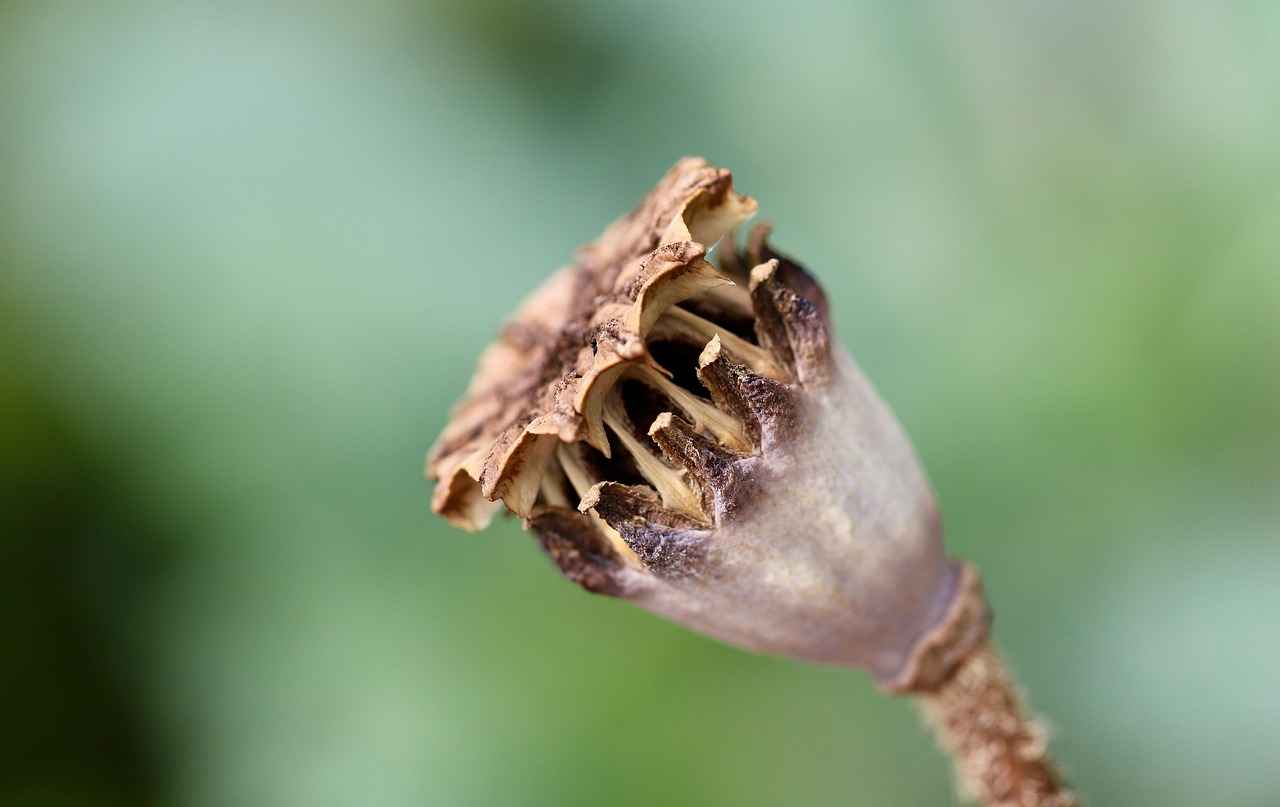
How to Make Chia Seed Jam at Home?
Making chia seed jam at home is a delightful and straightforward process that allows you to enjoy a healthy and delicious spread without the preservatives found in many store-bought options. With just a few simple ingredients, you can create a flavorful jam that complements a variety of dishes. This guide will walk you through the steps to make your own chia seed jam, ensuring that you can savor the taste of homemade goodness.
To create your own chia seed jam, you will need:
- Fresh fruit: Berries, peaches, or mangoes work wonderfully.
- Chia seeds: These tiny seeds are the star of the show, providing texture and nutrition.
- Sweetener: Honey, maple syrup, or agave syrup can enhance the flavor.
- Lemon juice: This adds a touch of acidity and helps preserve the jam.
Follow these easy steps to whip up your chia seed jam:
- Prepare the fruit: Wash and chop your chosen fruit into small pieces. If you prefer a smoother texture, you can mash the fruit with a fork or blend it lightly.
- Mix ingredients: In a bowl, combine the prepared fruit, chia seeds, sweetener, and lemon juice. Stir well to ensure the chia seeds are evenly distributed.
- Let it sit: Allow the mixture to sit for about 10-15 minutes. This resting period enables the chia seeds to absorb liquid and thicken the jam.
- Adjust consistency: After resting, check the consistency. If it’s too thick, you can add a splash of water or fruit juice. If it’s too thin, let it sit longer.
- Store your jam: Transfer the jam to an airtight container and refrigerate. It can last for up to two weeks in the fridge.
Different fruits yield different flavors and textures. Popular choices include:
- Strawberries: Sweet and juicy, perfect for a classic jam.
- Blueberries: Rich in antioxidants, they create a vibrant color.
- Mangoes: For a tropical twist, mango chia seed jam is delightful.
The choice of sweetener can significantly impact the flavor and health benefits of your jam. Natural sweeteners like honey and maple syrup not only enhance the taste but also offer additional nutrients compared to processed sugars. Experiment with different sweeteners to find your perfect balance.
Understanding the shelf life of your homemade chia seed jam is crucial. When stored properly in the refrigerator, it can last up to two weeks. For longer storage, consider freezing it in small portions. This way, you can enjoy your homemade jam even after a few weeks.
Chia seed jam is versatile and can be incorporated into many dishes:
- Breakfast: Spread it on toast, mix it into yogurt, or swirl it into oatmeal.
- Desserts: Use it as a topping for cakes, pastries, or ice cream.
By following these steps and tips, you can create a delicious and nutritious chia seed jam right in your kitchen. Enjoy the process and the delightful flavors of your homemade creation!
Essential Ingredients for Chia Seed Jam
Chia seed jam is a nutritious and versatile spread that can easily be made at home with just a few simple ingredients. Understanding the essential components of this delightful jam is crucial for achieving the perfect flavor and texture. Below, we delve into the key ingredients needed to create chia seed jam and how each contributes to its overall appeal.
- Fresh Fruit: The primary ingredient in chia seed jam is fresh fruit. You can use a variety of fruits such as strawberries, blueberries, raspberries, or peaches. Each fruit brings its own unique flavor profile and sweetness level, allowing for endless customization. For instance, strawberries provide a classic sweetness, while blueberries offer a more tart taste.
- Chia Seeds: Chia seeds are the star of the show when it comes to texture. When mixed with liquid, they swell and form a gel-like consistency, which is essential for creating the jam’s thickness. These tiny seeds are also loaded with omega-3 fatty acids, fiber, and antioxidants, making them a superfood that enhances the nutritional value of your jam.
- Sweetener: Depending on your taste preference and dietary needs, you can choose from various sweeteners. Natural options like honey, maple syrup, or agave nectar can add a rich sweetness without the refined sugars found in many store-bought jams. Alternatively, if you prefer a low-calorie option, consider using stevia or monk fruit sweetener.
- Lemon Juice: A splash of lemon juice is crucial for balancing the sweetness of the fruit and sweetener. It adds a refreshing acidity that brightens the overall flavor of the jam. Additionally, the acidity from lemon juice helps to preserve the jam, extending its shelf life.
When making chia seed jam, the combination of these ingredients creates a harmonious blend of flavors and textures. The fresh fruit serves as the base, providing natural sweetness and flavor. The chia seeds not only thicken the mixture but also add a delightful crunch, making each spoonful enjoyable.
The choice of sweetener can significantly impact the jam’s taste. For example, using honey will impart a floral note, while maple syrup offers a deeper, earthy sweetness. Meanwhile, lemon juice brightens the overall flavor, ensuring that the jam isn’t overly sweet.
In summary, the essential ingredients for chia seed jam—fresh fruit, chia seeds, sweetener, and lemon juice—work together to create a delicious, healthy alternative to traditional jams. By experimenting with different fruits and sweeteners, you can tailor the flavor to your liking while reaping the numerous health benefits that chia seeds provide.
Choosing the Right Fruits for Your Jam
When it comes to making chia seed jam, the choice of fruit is crucial. Different fruits yield different flavors and textures, which can significantly influence the overall taste of your jam. In this section, we will explore which fruits work best for chia seed jam and how to creatively combine them to achieve a unique and delicious flavor profile.
The fruit you choose not only determines the flavor of your jam but also its texture and nutritional value. Some fruits have higher natural sugars, while others provide a tartness that can balance sweetness. Additionally, the water content in fruits affects how your jam sets. Here’s a breakdown of some popular fruits to consider:
- Strawberries: These are a classic choice for chia seed jam. Their natural sweetness and vibrant color make for a delightful spread. When mashed, they create a chunky texture that pairs well with various dishes.
- Blueberries: Known for their antioxidant properties, blueberries add a rich flavor and a deep hue to your jam. They blend smoothly, resulting in a creamy consistency that’s perfect for spreading.
- Raspberries: With their tartness, raspberries can add a refreshing twist to your jam. They also contain tiny seeds, which can enhance the texture and give a delightful crunch.
- Peaches: For a sweeter option, peaches provide a juicy and fragrant base for your chia seed jam. Their soft flesh breaks down easily, creating a smooth and luscious spread.
- Mango: This tropical fruit offers a unique flavor profile. Its sweetness and creamy texture can elevate your jam, making it an exotic addition to your breakfast table.
Combining different fruits can lead to exciting new flavors in your chia seed jam. Here are some combinations to consider:
- Strawberry and Basil: Adding fresh basil to strawberry jam can create an intriguing flavor twist, perfect for gourmet toast or as a topping for desserts.
- Mango and Lime: The zestiness of lime complements the sweetness of mango, resulting in a refreshing jam ideal for summer breakfasts.
- Raspberry and Peach: The tartness of raspberries paired with the sweetness of peaches creates a balanced and vibrant jam that’s great on pancakes or waffles.
When choosing fruits for your chia seed jam, consider the texture you desire. For a smoother jam, opt for fruits that blend easily, like mangoes or strawberries. If you prefer a chunkier texture, mix in fruits with more structure, such as peaches or apples. The chia seeds themselves will also add a slight crunch, enhancing the overall mouthfeel.
Don’t hesitate to experiment with seasonal fruits to create unique jams that reflect the time of year. For example, using fresh berries in the summer or apples and pears in the fall can provide a delightful seasonal touch to your homemade jam.
In conclusion, selecting the right fruits for your chia seed jam is essential for achieving a delicious and satisfying spread. By understanding how different fruits contribute to flavor, texture, and nutritional value, you can create a variety of jams that cater to your personal taste and dietary needs. So, roll up your sleeves, get creative in the kitchen, and enjoy the process of making your own unique chia seed jam!
Sweeteners: Natural vs. Processed
When it comes to making chia seed jam, the choice of sweetener is not just a matter of taste; it can significantly impact the health benefits of your homemade spread. Understanding the differences between natural sweeteners like honey and maple syrup and their processed counterparts can help you make an informed decision that aligns with your health goals.
Natural sweeteners, such as honey, maple syrup, and agave nectar, are often less processed than refined sugars. They retain more of their natural nutrients and can offer additional health benefits. For instance, honey is known for its antioxidant properties and can aid in soothing sore throats, while maple syrup contains minerals like zinc and manganese.
| Sweetener | Calories per Tablespoon | Health Benefits |
|---|---|---|
| Honey | 64 | Antioxidant properties, antimicrobial effects |
| Maple Syrup | 52 | Rich in minerals, lower glycemic index |
| Agave Nectar | 60 | Low glycemic index, sweeter than sugar |
On the other hand, processed sweeteners like white sugar and high-fructose corn syrup can be detrimental to health. These sweeteners are often stripped of their nutrients and can lead to spikes in blood sugar, contributing to weight gain and other health issues. Moreover, they can lack the beneficial compounds found in natural sweeteners.
When selecting a sweetener for your chia seed jam, consider the following:
- Flavor Profile: Honey adds a distinct floral flavor, while maple syrup lends a rich, caramel-like taste.
- Texture: Some sweeteners may alter the texture of your jam. For instance, honey can make it thicker.
- Health Considerations: If you have dietary restrictions or health concerns, choose a sweetener that aligns with your needs.
Don’t hesitate to experiment with different sweeteners in your chia seed jam recipe. You might find that a combination of natural sweeteners enhances the flavor and provides a more balanced taste. For example, mixing honey and maple syrup can create a unique blend that is both delicious and nutritious.
In conclusion, the choice of sweetener plays a crucial role in the overall health benefits of your chia seed jam. By opting for natural sweeteners, you not only enhance the flavor but also contribute to your well-being. So, the next time you whip up a batch of chia seed jam, consider the sweetener you use and its potential impact on your health.
Step-by-Step Instructions for Making Chia Seed Jam
Creating your own chia seed jam at home is not only simple but also a rewarding experience that allows you to customize flavors and sweetness to your liking. Follow these detailed instructions to make your delicious chia seed jam, from preparing the fruit to mixing in the chia seeds and letting it set.
Before you start, ensure you have the following essential ingredients:
- Fresh Fruit: Choose ripe fruits like strawberries, blueberries, or peaches.
- Chia Seeds: These tiny seeds are the star of the jam, providing texture and nutrition.
- Sweetener: Options include honey, maple syrup, or agave syrup.
- Lemon Juice: This adds a touch of acidity and enhances flavor.
Start by washing your chosen fruit thoroughly. Remove any stems or pits, then chop the fruit into small pieces. If you’re using berries, you can leave them whole or slightly mash them with a fork for a chunkier texture. Tip: The riper the fruit, the sweeter your jam will be!
If you prefer a smoother jam, you can cook the fruit over medium heat in a saucepan for about 5-10 minutes. This helps release the natural juices and creates a syrupy base. Stir occasionally to prevent sticking. Once softened, remove from heat and let cool slightly.
In a mixing bowl, combine the prepared fruit with chia seeds. The typical ratio is about 3 tablespoons of chia seeds for every cup of fruit. Add your desired amount of sweetener and a squeeze of lemon juice. Mix everything well until the chia seeds are evenly distributed.
Transfer the mixture to a clean jar or container and let it sit at room temperature for about 15-30 minutes. This allows the chia seeds to absorb the liquid and thicken the jam. For a firmer consistency, you can refrigerate it for a few hours or overnight.
Once your chia seed jam has reached the desired consistency, store it in the refrigerator. It typically lasts for about 1-2 weeks. For longer storage, consider freezing it in small portions.
Your homemade chia seed jam can be used in numerous ways! Spread it on toast, mix it into yogurt, or use it as a topping for pancakes and desserts. The possibilities are endless!
By following these simple steps, you can create a healthy and delicious chia seed jam that is not only satisfying but also packed with nutrients. Enjoy the process and the delightful results!
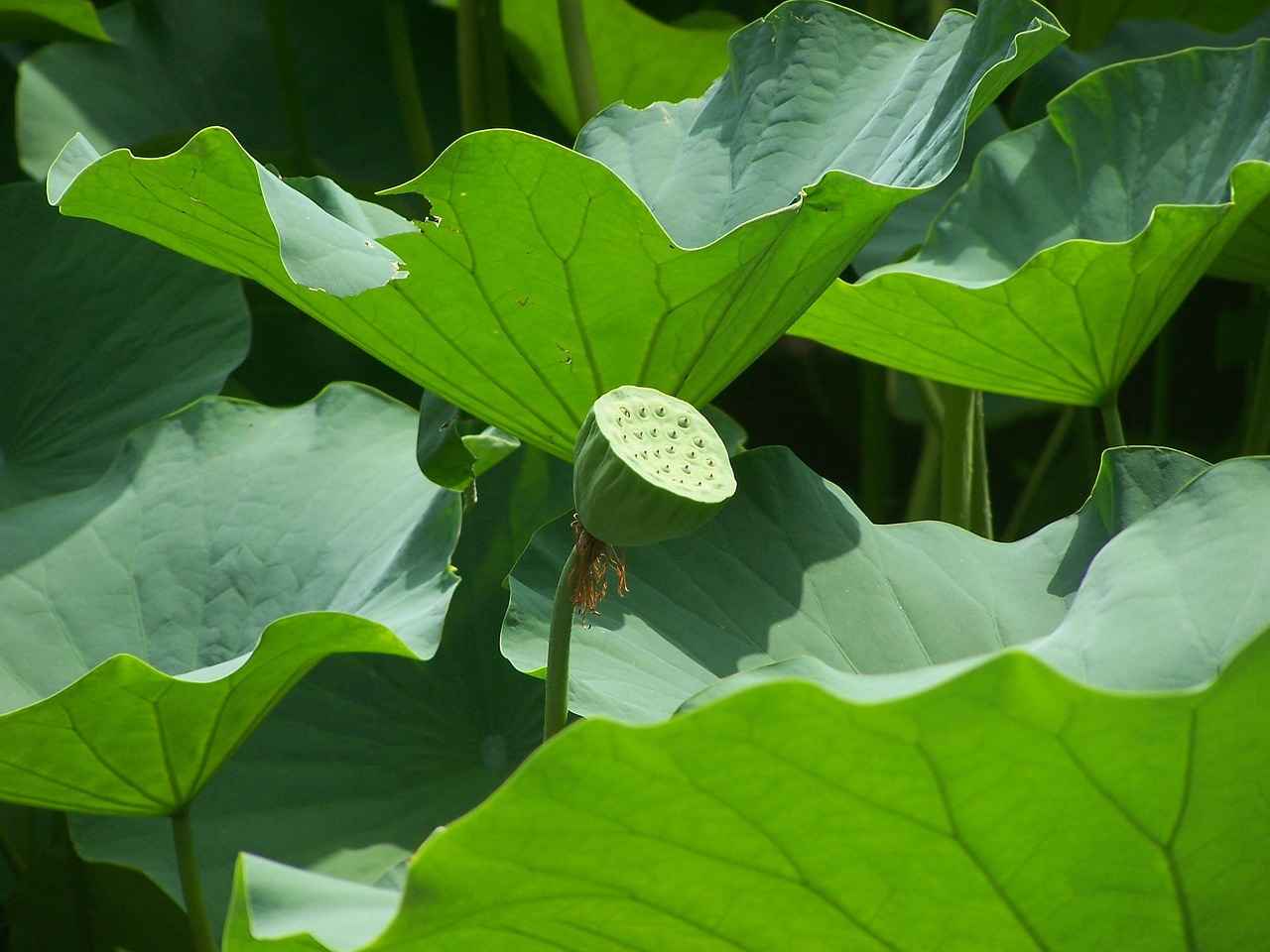
How Long Does Chia Seed Jam Last?
Understanding the shelf life of your homemade chia seed jam is crucial for maintaining its freshness and flavor. Chia seed jam is not only a delicious alternative to store-bought spreads but also a healthier option packed with nutrients. However, to fully enjoy its benefits, proper storage is essential. This article will guide you through the best practices for storing chia seed jam and how to determine its longevity.
Homemade chia seed jam can typically last for about 1 to 2 weeks in the refrigerator. The exact duration depends on several factors, including the ingredients used and how well it is stored. If you want to extend its shelf life, freezing is a viable option that can keep your jam fresh for up to 6 months.
To maximize the freshness and flavor of your chia seed jam, follow these storage tips:
- Use an Airtight Container: Store your jam in a clean, airtight container to prevent exposure to air and moisture.
- Refrigeration: Keep the jam in the refrigerator at all times when not in use. This helps slow down the growth of bacteria.
- Freezing: If you have a large batch, consider freezing portions in freezer-safe containers. This method preserves the flavor and texture for longer periods.
Knowing when your chia seed jam has gone bad is important for your health. Here are some signs of spoilage:
- Off Smell: If the jam emits a sour or unusual odor, it’s best to discard it.
- Changes in Color: A significant change in color can indicate spoilage.
- Mold Growth: Any visible mold on the surface is a clear sign that the jam should not be consumed.
Yes, you can freeze chia seed jam to extend its shelf life. When freezing, it’s advisable to:
- Use Small Portions: Freeze in small containers or ice cube trays to make it easier to thaw only what you need.
- Label and Date: Always label your containers with the date of freezing to keep track of its freshness.
To thaw your frozen chia seed jam, simply transfer it to the refrigerator overnight. This gradual thawing helps maintain its texture and flavor. Avoid using a microwave, as this can alter the consistency of the jam.
By understanding how to properly store and recognize the signs of spoilage, you can enjoy your homemade chia seed jam at its best. With its nutritious ingredients and delightful taste, chia seed jam is a fantastic addition to your pantry. Whether spread on toast or mixed into yogurt, it offers a healthy and delicious option for your meals.
Refrigeration vs. Freezing
When it comes to preserving your homemade chia seed jam, understanding the best storage methods is essential for maintaining its flavor and texture. The two primary options for storing your jam are refrigeration and freezing. Each method has its own benefits and can significantly extend the shelf life of your delicious creation.
Storing your chia seed jam in the refrigerator is a straightforward and effective method. When properly sealed in an airtight container, refrigerated chia seed jam can last for up to two weeks. This method is ideal for those who plan to consume their jam relatively quickly. Keeping it cold helps to preserve the freshness and flavor of the ingredients, ensuring that every spoonful tastes just as delightful as the day it was made.
- Choose the Right Container: Use a clean, airtight glass jar or a BPA-free plastic container to prevent contamination.
- Cool Before Sealing: Allow the jam to cool completely before sealing it in the container to avoid condensation, which can lead to spoilage.
- Label and Date: Always label your container with the date it was made to keep track of its freshness.
If you want to store your chia seed jam for a longer period, freezing is the best option. Frozen chia seed jam can last for up to six months without losing its flavor or nutritional value. This is particularly beneficial for those who make large batches or want to enjoy their jam throughout the year.
- Use Freezer-Safe Containers: Opt for freezer-safe jars or silicone containers that can withstand low temperatures.
- Leave Space for Expansion: When filling containers, leave about an inch of space at the top to allow for expansion as the jam freezes.
- Portion Control: Consider freezing your jam in smaller portions, making it easier to thaw only what you need.
When you’re ready to enjoy your frozen chia seed jam, it’s important to thaw it properly to maintain its texture. The best method is to transfer the container to the refrigerator and allow it to thaw overnight. This slow thawing process helps prevent the jam from becoming watery. If you’re short on time, you can also thaw it at room temperature for a few hours, but avoid using a microwave, as this can alter the consistency.
Ultimately, the choice between refrigeration and freezing depends on your consumption habits. If you enjoy your jam regularly and can finish it within two weeks, refrigeration is convenient. However, if you prefer to make larger batches to enjoy throughout the year, freezing is the way to go. Both methods ensure that your chia seed jam remains delicious and nutritious, giving you the flexibility to savor this healthy spread whenever you like.
Signs That Your Chia Seed Jam Has Spoiled
When it comes to homemade chia seed jam, knowing how to identify spoilage is crucial for your health and safety. While this nutritious spread is a fantastic alternative to traditional jams, it can go bad just like any other food product. Here are the key signs that your chia seed jam has spoiled, ensuring you avoid consuming unsafe products.
One of the first indicators of spoilage is a change in appearance. Fresh chia seed jam should have a vibrant color and a pleasant texture. If you notice any of the following visual changes, it’s time to discard your jam:
- Mold Growth: If you see any fuzzy or discolored spots on the surface, this is a clear sign of mold, which can be harmful if ingested.
- Separation: While some separation of liquid is normal, excessive liquid pooling on top can indicate spoilage.
- Darkening Color: A significant darkening in color may suggest that the jam has oxidized and is no longer fresh.
Another effective way to determine if your chia seed jam has gone bad is through its smell. Fresh jam should have a sweet, fruity aroma. If you detect any of the following odors, it’s best to err on the side of caution:
- Off or Sour Smell: A sour or rancid smell is a strong indicator that the jam is spoiled.
- Fermented Odor: If your jam smells fermented or alcoholic, it has likely begun to spoil.
While it’s not advisable to taste potentially spoiled food, if you are uncertain, a small taste can help you determine freshness. However, if you notice:
- Unusual Bitterness: A bitter or off-putting taste is a clear sign that your jam has spoiled.
- Strange Texture: If the texture has become excessively watery or gritty, it’s best to discard it.
Proper storage is essential for maintaining the quality of your chia seed jam. Always store it in an airtight container in the refrigerator. If you’ve kept it at room temperature for extended periods or noticed any of the spoilage signs mentioned above, it’s safer to dispose of it.
Typically, homemade chia seed jam can last for about 1-2 weeks in the refrigerator. If you want to extend its shelf life, consider freezing it. However, be mindful that even frozen jam can spoil over time, so it’s best to consume it within 3-6 months for optimal quality.
By being vigilant and recognizing these signs of spoilage, you can enjoy your chia seed jam without worry. Always prioritize your health and safety by ensuring that the products you consume are fresh and safe.

Creative Ways to Use Chia Seed Jam
Chia seed jam is not only a delicious alternative to traditional jams but also a nutritious addition to your meals and snacks. Its versatility allows it to be incorporated in various dishes, enhancing flavor while providing health benefits. Here are some creative ways to use chia seed jam that will inspire you to make it a staple in your kitchen.
- Spread on Toast: Start your day with a slice of whole-grain toast topped with chia seed jam. It adds a burst of flavor and sweetness without the added sugars found in many commercial jams.
- Mix into Yogurt: Stirring chia seed jam into yogurt creates a delightful parfait. Add some granola and fresh fruit for a balanced breakfast.
- In Oatmeal: Incorporate chia seed jam into your morning oatmeal for a fruity twist. It not only enhances the taste but also boosts the nutritional value.
- Nut Butter Dip: Pair chia seed jam with your favorite nut butter for a delicious dip. This combination makes for a satisfying snack that’s both filling and nutritious.
- Fruit and Cheese Platter: Add chia seed jam to a cheese platter for an unexpected flavor pairing. It complements a variety of cheeses, enhancing your snack experience.
- Chia Seed Jam Smoothies: Blend chia seed jam into smoothies for added sweetness and nutrition. It pairs well with bananas, spinach, and almond milk.
- Layered Parfaits: Create beautiful desserts by layering chia seed jam with whipped cream and fresh fruit. This not only looks appealing but is also a healthier dessert option.
- Chia Seed Jam Tarts: Use chia seed jam as a filling for tarts or pastries. It provides a fruity flavor that can elevate any dessert.
- Ice Cream Topping: Drizzle chia seed jam over vanilla ice cream for a refreshing treat. The jam adds a fruity kick that complements the creaminess of the ice cream.
- Glaze for Meats: Use chia seed jam as a glaze for roasted meats. Its sweetness can balance the savory flavors, making your dishes more complex and delicious.
- Salad Dressing: Incorporate chia seed jam into salad dressings for a fruity twist. Combine it with olive oil, vinegar, and spices for a unique dressing.
- Sandwich Spread: Replace traditional spreads with chia seed jam in sandwiches. It pairs well with turkey, ham, or even grilled vegetables.
In summary, chia seed jam is a versatile ingredient that can enhance a variety of dishes, from breakfast to desserts and even savory meals. Its health benefits combined with its delicious flavor make it a wonderful addition to your culinary repertoire. Embrace the creativity of chia seed jam and explore the endless possibilities it offers!
Chia Seed Jam in Breakfast Dishes
Enhancing your breakfast with chia seed jam is a delightful way to start your day. This nutritious spread not only adds flavor but also boosts the health benefits of your morning meal.
Chia seed jam is a versatile and healthy alternative to traditional jams. It is rich in omega-3 fatty acids, fiber, and antioxidants, making it a powerhouse of nutrition. Unlike store-bought jams, which often contain added sugars and preservatives, chia seed jam is simple and can be made with fresh fruits, allowing you to control the ingredients.
Oatmeal is a breakfast staple for many, and adding chia seed jam can elevate its taste and nutritional value. Here’s how:
- Prepare your oatmeal as usual.
- Once cooked, swirl in a generous spoonful of chia seed jam.
- Top with fresh fruits, nuts, or seeds for added texture and flavor.
This combination not only enhances the flavor but also adds a burst of nutrients to your meal.
Yogurt is another fantastic base for chia seed jam. The tartness of yogurt complements the sweetness of the jam perfectly. Here’s a quick guide:
- Start with plain or flavored yogurt.
- Add a couple of tablespoons of chia seed jam.
- Mix well and top with granola or your favorite fruits.
This not only makes for a delicious breakfast but also packs a nutritional punch with probiotics from the yogurt and nutrients from the chia seeds.
One of the simplest ways to enjoy chia seed jam is by spreading it on toast. Here’s how to make it even more exciting:
- Choose your favorite bread, whether whole grain, gluten-free, or sourdough.
- Toast it to your desired crispness.
- Spread a layer of chia seed jam on top.
- Add slices of banana, avocado, or a sprinkle of cinnamon for extra flavor.
This quick breakfast option is not only tasty but also filling and energizing, perfect for busy mornings.
Don’t be afraid to get creative! Here are a few ideas to inspire you:
- Mix chia seed jam into smoothies for a fruity flavor.
- Use it as a topping for pancakes or waffles.
- Incorporate it into baked goods like muffins or energy bars.
These combinations not only enhance the taste but also provide a nutritional boost to your favorite breakfast dishes.
In conclusion, incorporating chia seed jam into your breakfast routine is a simple way to add flavor and nutrition. Whether in oatmeal, yogurt, or on toast, this delicious spread can transform your morning meals into a wholesome and satisfying experience.
Using Chia Seed Jam in Desserts
Chia seed jam is not just a nutritious alternative to traditional spreads; it also serves as a versatile ingredient in various dessert recipes. Whether you are baking pastries, whipping up cakes, or creating other sweet treats, incorporating chia seed jam can enhance both the flavor and nutritional value of your desserts. Here’s how you can creatively use chia seed jam in your sweet creations.
Chia seed jam offers a unique texture and a burst of natural sweetness that can elevate your desserts. The seeds absorb liquid and expand, creating a thick, gel-like consistency that mimics traditional fruit jams. This not only adds moisture to baked goods but also infuses them with essential nutrients such as omega-3 fatty acids, fiber, and antioxidants.
Using chia seed jam in pastries can be a game-changer. Here are some ideas:
- Fillings for Croissants: Spread a thin layer of chia seed jam inside croissants before baking for a delightful surprise.
- Layered in Danish Pastries: Use chia seed jam as a filling between layers of dough, adding a fruity flavor that complements the buttery pastry.
- Swirled into Muffins: Add dollops of chia seed jam to muffin batter before baking for a sweet, fruity burst in every bite.
Chia seed jam can also be used in cakes and cupcakes, providing moisture and flavor:
- As a Cake Filling: Use chia seed jam as a filling between layers of cake. It pairs wonderfully with vanilla or chocolate cakes, adding a refreshing twist.
- In Frostings: Mix chia seed jam into cream cheese or buttercream frosting for a unique flavor profile that complements the sweetness of the cake.
- Drizzled on Top: A simple drizzle of chia seed jam over the top of cupcakes can serve as a beautiful and tasty decoration.
Beyond pastries and cakes, chia seed jam can enhance a variety of desserts:
- Chia Seed Jam Parfaits: Layer yogurt, granola, and chia seed jam in a glass for a visually appealing and nutritious dessert.
- Ice Cream Topping: Warm up chia seed jam slightly and drizzle it over vanilla ice cream for an easy yet impressive dessert.
- Fruit Tarts: Use chia seed jam as a glaze for fruit tarts, providing a shiny finish and a flavorful kick.
Incorporating chia seed jam into your desserts not only enhances taste but also boosts their nutritional profile. Chia seeds are rich in fiber, which aids digestion, and they provide a source of protein, making your sweet treats more satisfying and nutritious. By using chia seed jam, you can enjoy desserts that are not only delicious but also align with a healthier lifestyle.
In conclusion, chia seed jam is a fantastic ingredient to explore in the realm of desserts. Its versatility and health benefits make it a smart choice for anyone looking to indulge their sweet tooth without compromising on nutrition. So, the next time you bake, consider reaching for that jar of homemade chia seed jam and unleash your creativity!
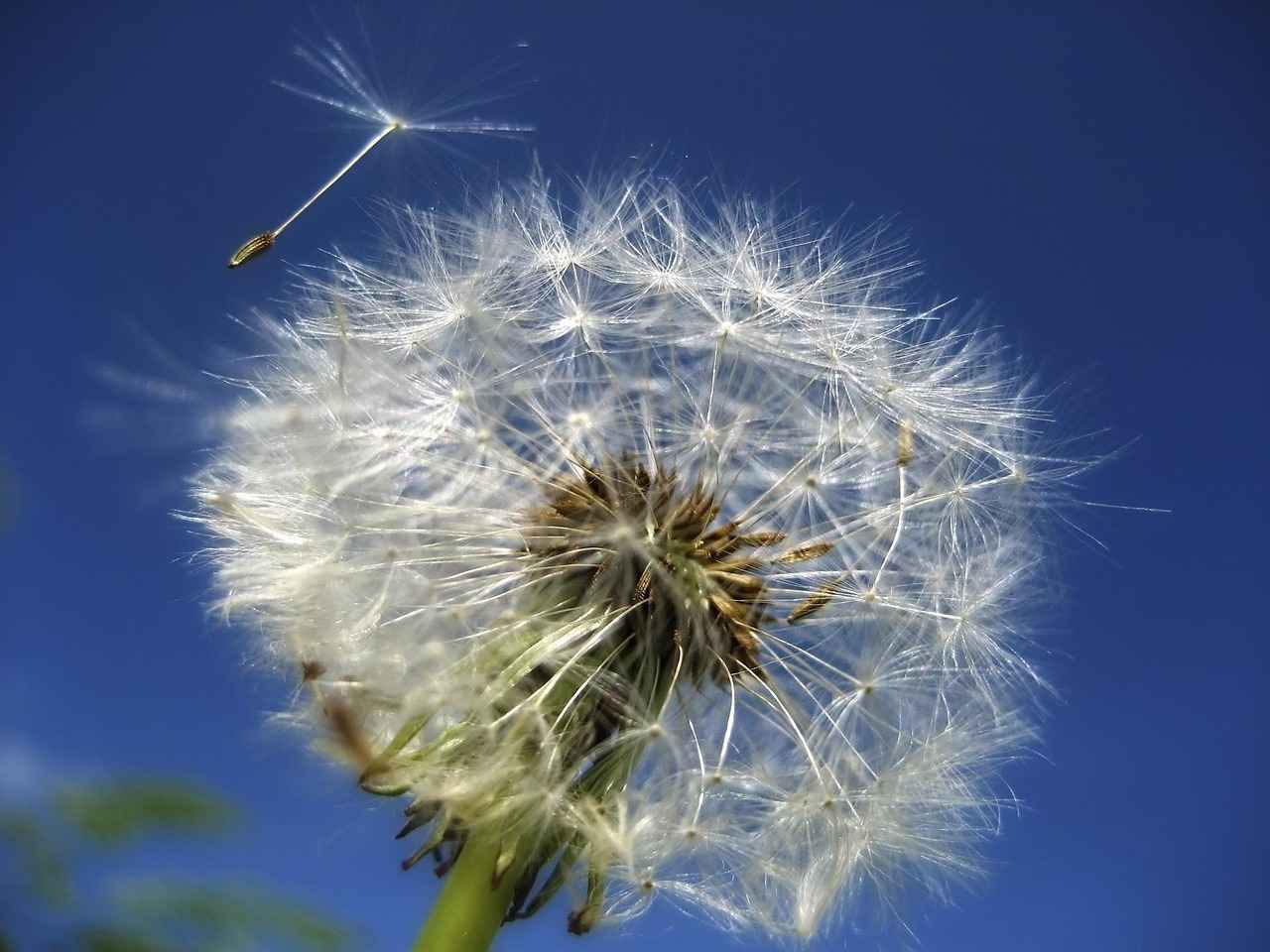
Comparing Chia Seed Jam to Store-Bought Options
When it comes to spreads, chia seed jam has gained popularity as a nutritious alternative to traditional jams found in stores. But what are the real differences between homemade chia seed jam and the store-bought varieties? This section delves into the nutritional benefits, taste comparisons, and the overall advantages of making your own jam at home.
One of the primary advantages of homemade chia seed jam is its nutritional profile. Store-bought jams often contain added sugars, preservatives, and artificial flavors, which can detract from their health benefits. In contrast, homemade chia seed jam allows you to control the ingredients:
- Fresh Ingredients: You can select ripe fruits that are high in vitamins and antioxidants.
- No Added Sugars: By using natural sweeteners or opting for no sweetener at all, you can significantly reduce the sugar content.
- High Fiber Content: Chia seeds are rich in fiber, which aids digestion and promotes a feeling of fullness.
Taste is subjective, but many people find that homemade chia seed jam offers a freshness and depth of flavor that store-bought varieties simply cannot match. Here are some factors that contribute to the flavor differences:
- Customization: You can experiment with different fruits and spices, tailoring the flavor to your preferences.
- No Artificial Flavors: Many store-bought jams use artificial ingredients to enhance taste, while homemade versions rely on the natural sweetness of fruits.
- Texture Variability: Homemade chia jam can be made chunky or smooth, depending on your preference, providing a unique mouthfeel.
While the initial investment in ingredients may seem higher for homemade chia seed jam, the cost per serving is often lower than that of store-bought options. Consider the following:
- Bulk Buying: Purchasing fruits and chia seeds in bulk can reduce costs.
- Multiple Batches: A single batch of homemade jam can yield several jars, making it a more economical choice in the long run.
Another aspect to consider is the environmental impact of your choices. Homemade chia seed jam typically involves less packaging and fewer transportation emissions than store-bought options. By making your own, you can:
- Reduce Waste: Use reusable jars and containers for storage.
- Support Local Farmers: Purchase seasonal fruits from local markets to minimize your carbon footprint.
While homemade chia seed jam may require some preparation time, it is surprisingly quick to make. In just a few minutes, you can create a delicious spread that rivals any store-bought option. On the other hand, store-bought jams may offer convenience but often come at the cost of quality.
In summary, both homemade and store-bought chia seed jams have their merits, but the advantages of making your own are substantial. From better nutrition and customizable flavors to cost-effectiveness and environmental benefits, homemade chia seed jam stands out as a superior choice for health-conscious individuals.
Nutritional Differences
When it comes to spreads, chia seed jam stands out as a remarkably nutritious alternative to traditional jams. Traditional jams are often loaded with added sugars and preservatives, which can detract from their health benefits. In contrast, homemade chia seed jam offers a plethora of nutritional advantages that cater to health-conscious individuals.
What Makes Chia Seed Jam Nutrient-Dense?
Chia seeds are tiny powerhouses of nutrition. They are rich in omega-3 fatty acids, which are essential for heart health, and they provide an excellent source of dietary fiber. This fiber not only aids in digestion but also helps keep you feeling full longer, making it a great addition to a weight management plan.
Moreover, chia seeds are packed with antioxidants, which help combat oxidative stress in the body. When you make chia seed jam, you combine these seeds with fresh fruits, which adds vitamins, minerals, and additional fiber. This combination creates a naturally sweet spread that is lower in calories compared to traditional jams.
Comparing Nutritional Profiles
| Component | Traditional Jam (per 1 tbsp) | Chia Seed Jam (per 1 tbsp) |
|---|---|---|
| Calories | 50-60 | 30-35 |
| Sugars | 10-15g | 2-3g |
| Fiber | 0g | 2g |
| Omega-3 Fatty Acids | 0g | 1.5g |
As the table illustrates, traditional jams often contain significantly higher levels of sugar and calories, while chia seed jam provides beneficial nutrients with a fraction of the sugar content. This makes chia seed jam not only a healthier choice but also a more satisfying one for those looking to manage their sugar intake.
The Benefits of Homemade Versions
One of the key advantages of making chia seed jam at home is the ability to control the ingredients. Store-bought jams often contain artificial flavors and preservatives that can be detrimental to health. By using natural sweeteners such as honey or maple syrup, you can further enhance the nutritional profile of your jam.
Additionally, homemade chia seed jam allows for customization. You can experiment with different fruits to create unique flavors while maximizing the nutritional benefits. For instance, using berries can increase the antioxidant content, while adding citrus can provide a boost of vitamin C.
Final Thoughts
In summary, chia seed jam is a superior alternative to traditional jams and spreads, offering a wealth of nutritional benefits without the excess sugars and artificial ingredients. By making it at home, you not only ensure the quality of your food but also enjoy a delicious and versatile spread that can enhance various meals. Whether spread on toast, mixed into yogurt, or used as a filling for pastries, chia seed jam is a nutritious choice that supports a healthy lifestyle.
Flavor Profiles: Homemade vs. Store-Bought
Taste is a deeply personal experience, shaped by individual preferences, memories, and cultural influences. When it comes to chia seed jam, the flavor profiles can vary significantly between homemade versions and store-bought options. Understanding these differences can help you decide which option aligns better with your palate.
Why Choose Homemade Chia Seed Jam?
One of the most compelling reasons to make chia seed jam at home is the opportunity to customize flavors. When you prepare your own jam, you have complete control over the ingredients, allowing you to experiment with various fruits, sweeteners, and additional flavorings. For instance, using ripe strawberries can impart a sweet and fruity flavor, while adding a hint of lemon juice can enhance the overall taste with a refreshing zest.
Exploring Unique Flavor Combinations
- Berry Medley: Combine blueberries, raspberries, and blackberries for a rich, tart flavor.
- Tropical Twist: Use mango and pineapple for a sweet, exotic jam.
- Spiced Pear: Add cinnamon and nutmeg to pear puree for a warm, comforting spread.
On the other hand, store-bought chia seed jams often come with added preservatives, artificial flavors, and sweeteners, which can mask the natural taste of the fruit. While they may offer convenience, the flavor can be quite different from what you would expect from fresh, homemade jam.
Comparing Flavor Intensity
The intensity of flavors in homemade chia seed jam is generally more pronounced. Fresh fruits used in the preparation can provide vibrant, authentic flavors that are often lost in mass-produced alternatives. For example, a homemade raspberry chia seed jam can taste fresh and tangy, while a store-bought version may taste overly sweet or artificial.
Texture Matters
Another important aspect of flavor perception is texture. Homemade chia seed jam typically has a chunkier texture, allowing you to experience the fruit pieces in each bite. In contrast, many store-bought jams are blended to achieve a smooth consistency, which may diminish the overall flavor experience for some.
Personal Preferences Play a Role
Ultimately, the choice between homemade and store-bought chia seed jam comes down to personal preference. Some individuals may prefer the convenience of store-bought options, while others value the ability to create unique flavors tailored to their taste. Experimenting with different recipes can lead to delightful discoveries, making homemade jam a fun and rewarding endeavor.
Conclusion: Which One Suits Your Palate?
When comparing the flavor profiles of homemade and store-bought chia seed jams, it’s essential to consider your own taste preferences and dietary needs. If you enjoy experimenting with flavors and value freshness, homemade chia seed jam is likely the better choice for you. However, if convenience is your priority, store-bought options can still provide a tasty alternative. Whichever you choose, both can be delicious additions to your meals.
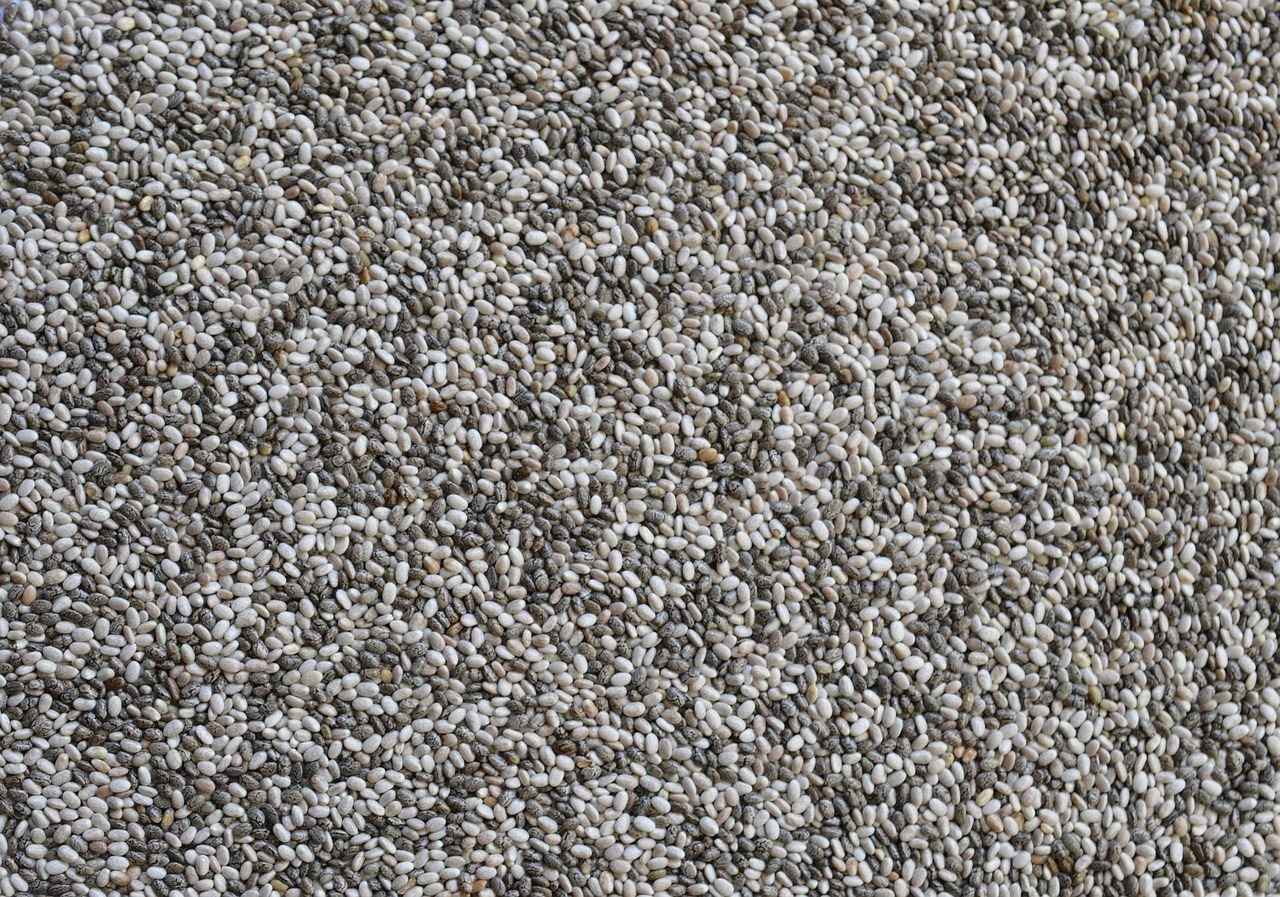
Are There Any Health Risks Associated with Chia Seed Jam?
Chia seed jam has gained popularity as a healthy alternative to traditional jams, but it’s important to consider the potential health risks associated with its consumption. While chia seeds are generally recognized as safe for most individuals, there are certain factors to be aware of to ensure a positive experience when enjoying chia seed jam.
Chia seeds are incredibly high in fiber, which can lead to digestive issues for some people. When consumed in large quantities, they may cause bloating, gas, or even constipation. To mitigate these effects, it’s advisable to:
- Start Small: If you’re new to chia seeds, begin with a small serving of chia seed jam to see how your body reacts.
- Stay Hydrated: Drink plenty of water when consuming high-fiber foods to aid digestion.
- Gradually Increase Intake: Slowly increase your consumption over time to allow your digestive system to adjust.
While rare, some individuals may experience allergic reactions or sensitivities to chia seeds. Symptoms may include itching, rash, or gastrointestinal discomfort. If you suspect an allergy, consult a healthcare professional before incorporating chia seeds into your diet. It’s also wise to:
- Monitor Your Body’s Response: Pay attention to how you feel after consuming chia seed jam for the first time.
- Consult with a Doctor: If you have a history of food allergies, seek advice from a healthcare provider.
Chia seeds can interact with certain medications, particularly those that affect blood sugar and blood pressure. Their high fiber content may also affect the absorption of some medications. To ensure safety:
- Consult Your Doctor: If you’re on medication, discuss chia seed consumption with your healthcare provider.
- Monitor Blood Sugar Levels: If you have diabetes, keep track of your blood sugar levels when adding chia seeds to your diet.
Another consideration is that chia seeds contain phytates, which can inhibit the absorption of certain minerals. This means that while chia seeds are nutritious, they may affect how well your body absorbs nutrients from other foods. To minimize this risk:
- Diverse Diet: Ensure your diet includes a variety of foods to meet your nutritional needs.
- Soak Chia Seeds: Soaking chia seeds before consumption can help reduce phytate levels.
In summary, while chia seed jam can be a nutritious addition to your diet, it’s essential to be aware of the potential health risks associated with chia seeds. By taking precautions and listening to your body, you can enjoy the benefits of chia seed jam while minimizing any adverse effects. Always remember that moderation is key, and when in doubt, consult a healthcare professional for personalized advice.
Digestive Considerations
Chia seeds are an incredibly nutritious addition to your diet, but they come with some that you should be aware of. Their high fiber content can lead to discomfort for some individuals, especially if consumed in large quantities. Understanding how to enjoy chia seed jam while minimizing digestive issues is essential for a pleasant experience.
Chia seeds are known for their ability to absorb water and expand in size, which can be beneficial for digestion by promoting a feeling of fullness. However, this property can also lead to gas, bloating, and cramping if your body is not accustomed to high fiber intake. To mitigate these effects, it’s important to introduce chia seeds gradually into your diet.
- Start Small: Begin with a small amount of chia seeds, perhaps a teaspoon, and gradually increase the quantity as your body adjusts.
- Hydrate: Always consume chia seeds with plenty of water. This helps them expand properly and aids in digestion.
- Soak Before Use: Soaking chia seeds in water or your choice of liquid before adding them to your jam can help reduce their potential to cause digestive discomfort.
It’s also essential to consider your overall fiber intake from other sources. If you already consume a high-fiber diet, adding chia seeds may push your fiber intake over the recommended daily amount, leading to discomfort. The general recommendation for adults is about 25-30 grams of fiber per day, so be mindful of how chia seeds fit into your daily intake.
In addition to fiber, some individuals may have sensitivities or allergies to chia seeds. If you experience unusual symptoms such as rash, itching, or gastrointestinal distress after consuming chia seed jam, it’s advisable to consult a healthcare professional. Always listen to your body and adjust your diet accordingly.
For those who enjoy chia seed jam but are concerned about digestive issues, consider these alternative approaches:
- Mix with Other Ingredients: Combine chia seed jam with yogurt or smoothies to help balance the fiber content and make it easier on your digestive system.
- Pair with Low-Fiber Foods: Serve chia seed jam on low-fiber foods like white bread or pancakes to reduce overall fiber intake in one meal.
- Monitor Portion Sizes: Keep an eye on the serving sizes of chia seed jam to avoid excessive fiber consumption at once.
By following these guidelines, you can enjoy the health benefits of chia seeds without the uncomfortable side effects. Always remember that moderation is key, and personal tolerance levels may vary. Incorporate chia seed jam into your diet thoughtfully and enjoy the delicious flavors and nutritional benefits it has to offer.
Allergies and Sensitivities
When it comes to incorporating chia seeds into your diet, it’s important to consider potential allergies and sensitivities. While chia seeds are generally regarded as a healthy food choice, some individuals may experience adverse reactions. Understanding these risks can help you make informed decisions about adding this nutritious ingredient to your meals.
Individuals who are allergic to chia seeds may experience a range of symptoms. These can include:
- Skin Reactions: Rashes, hives, or itching may occur upon consumption.
- Gastrointestinal Issues: Symptoms such as nausea, vomiting, or diarrhea can manifest.
- Respiratory Problems: Some may experience difficulty breathing or wheezing.
If you notice any of these symptoms after consuming chia seeds, it is essential to seek medical advice.
While chia seed allergies are relatively rare, certain groups may be more susceptible:
- Individuals with Other Food Allergies: Those with allergies to sesame seeds, flaxseeds, or other seeds may be at a higher risk.
- People with Existing Allergic Conditions: If you have a history of allergies, you may need to exercise caution.
To minimize the risk of an allergic reaction, consider the following steps:
- Start Small: Introduce chia seeds gradually into your diet. Begin with a small amount, such as a teaspoon, and monitor your body’s response.
- Consult a Healthcare Professional: If you have concerns about allergies or sensitivities, speak with a doctor or nutritionist before adding chia seeds to your meals.
If you suspect you are having an allergic reaction to chia seeds, take immediate action:
- Stop Consumption: Cease eating chia seeds and related products.
- Seek Medical Attention: If symptoms are severe, such as difficulty breathing, call emergency services or visit a healthcare facility.
If you find that you are allergic or sensitive to chia seeds, there are several alternatives that provide similar health benefits:
- Flaxseeds: High in omega-3 fatty acids and fiber, flaxseeds can be a great substitute.
- Hemp Seeds: These seeds are rich in protein and healthy fats and can be used in various recipes.
In conclusion, while chia seeds are a nutritious addition to many diets, it is crucial to be aware of potential allergies and sensitivities. By understanding the symptoms, risks, and safe introduction methods, you can enjoy the benefits of chia seeds while minimizing any adverse effects.
Frequently Asked Questions
- What are the health benefits of chia seed jam?
Chia seed jam is not just a tasty treat; it’s packed with nutrients! These tiny seeds are loaded with omega-3 fatty acids, fiber, and antioxidants, which can help improve digestion, support heart health, and boost your overall well-being.
- How long does homemade chia seed jam last?
When stored properly in the refrigerator, chia seed jam can last up to two weeks. If you want to keep it longer, consider freezing it, which can extend its shelf life for several months!
- Can I use any fruit to make chia seed jam?
Absolutely! While berries are popular choices for their flavor and natural sweetness, you can experiment with a variety of fruits like peaches, mangoes, or even apples to create your unique jam. Just remember, the fruit’s ripeness can affect the taste!
- Are there any side effects of consuming chia seeds?
Chia seeds are generally safe, but some individuals might experience digestive issues due to their high fiber content. It’s best to start with small amounts and drink plenty of water to help your body adjust.
- How can I use chia seed jam in my meals?
The possibilities are endless! You can spread it on toast, swirl it into yogurt, or even use it as a filling for pastries. It’s a delicious way to add flavor and nutrients to your breakfast or dessert!


